Ship and Boat Building in the United States and Gulf of Mexico Region
Abstract
In this issue, Dr. Posadas compiled and summarized the trends in the gross regional product, and number, wages, salaries, and earnings of workers and owners of the ship and boat building industry from 2014 to 2020 or 2021. The socioeconomic characteristics of workers and owners in 2020 were described. These long-term data on ship and boat building illustrate the significance of the industry in the national and Gulf economies. The direct impacts of the global pandemic on ship and boat building are presented in annual percent changes in output and jobs from 2019 to 2021.
Keywords
Ship and boat building; gross regional product; jobs; wages, salaries, and earnings; socioeconomic characteristics; workers and owners
Acknowledgement
Ship and Boat Building Gross Regional Product
The NAICS (2021) sector 33661 comprises of establishments primarily engaged in operating shipyards or boatyards. Shipyards are fixed facilities with drydocks and watercraft typically suitable or intended for other than personal or recreational use. Boats are defined as watercraft typically suitable or intended for personal use. Activities of shipyards include the construction of fabrication equipment capable of building a ship, defined as ships, their repair, conversion, and alteration, production of prefabricated ship and barge sections, and specialized services, such as ship scaling.
The gross regional product (GRP), also called regional gross domestic product (GDP), is the market value of all goods and services produced within a given area over a specific period and is a good measure of the size, income, and productivity of a regional economy (EMSI, 2021).
 Figure 1. The GRP of ship and boat building in the U.S. showed a rising trend since 2014, reaching $14.2 B in 2020. Source of raw data: EMSI. https://e.economicmodeling.com.
Figure 1. The GRP of ship and boat building in the U.S. showed a rising trend since 2014, reaching $14.2 B in 2020. Source of raw data: EMSI. https://e.economicmodeling.com.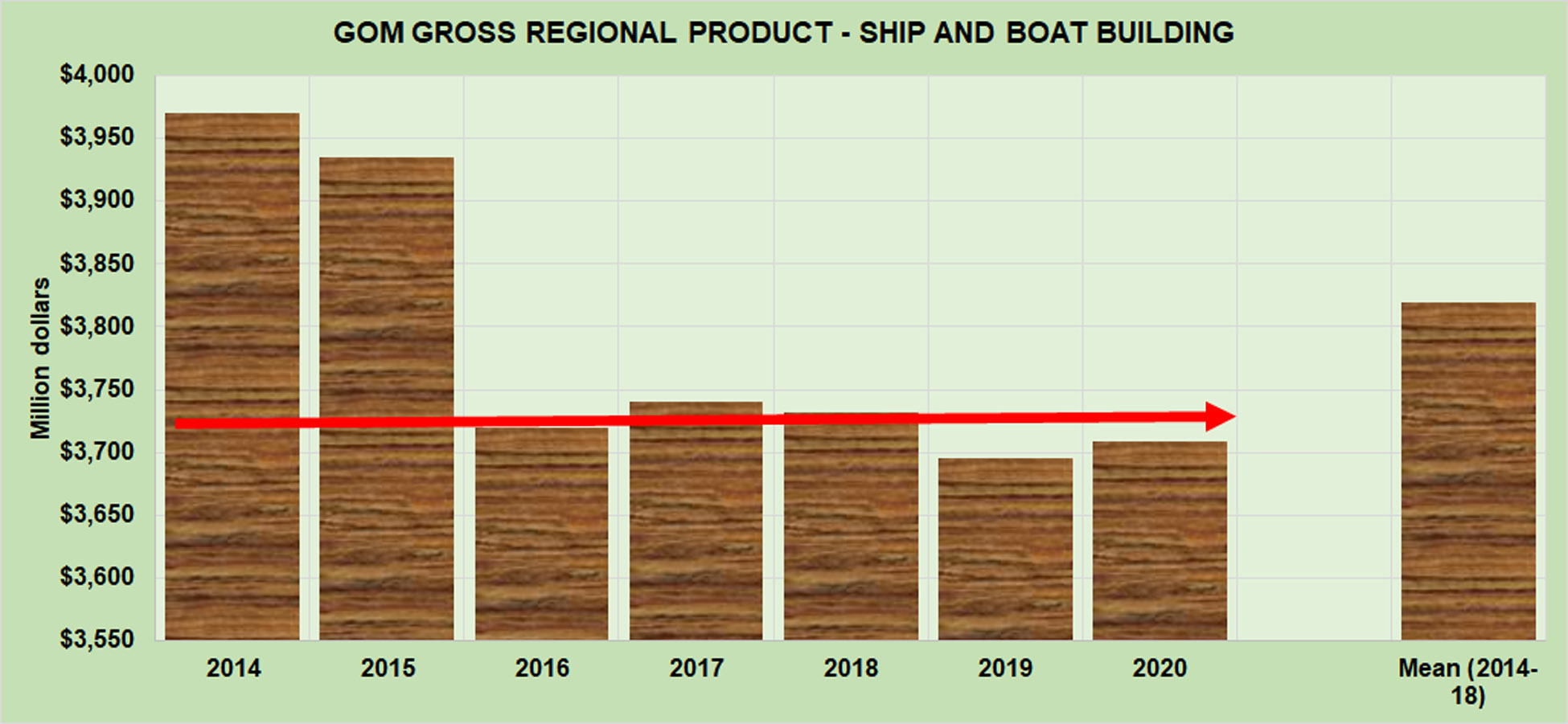 Figure 2. In the Gulf of Mexico (GoM) region, the GRP of ship and boat building fell considerably in 2016 and remained almost flat until 2020. Source of raw data: EMSI. https://e.economicmodeling.com.
Figure 2. In the Gulf of Mexico (GoM) region, the GRP of ship and boat building fell considerably in 2016 and remained almost flat until 2020. Source of raw data: EMSI. https://e.economicmodeling.com.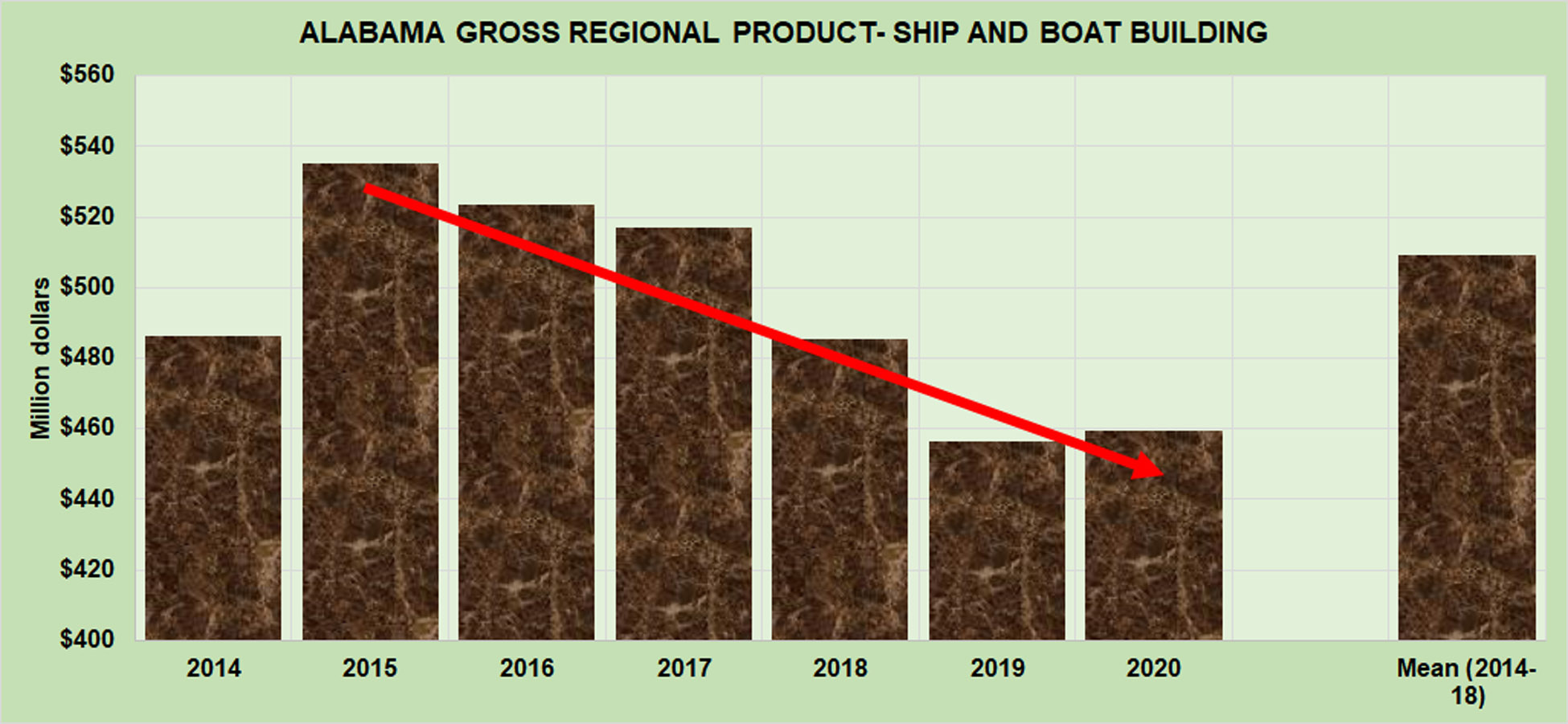 Figure 3. The GRP of ship and boat building in Alabama continued to fall until 2020. Source of raw data: EMSI. https://e.economicmodeling.com
Figure 3. The GRP of ship and boat building in Alabama continued to fall until 2020. Source of raw data: EMSI. https://e.economicmodeling.com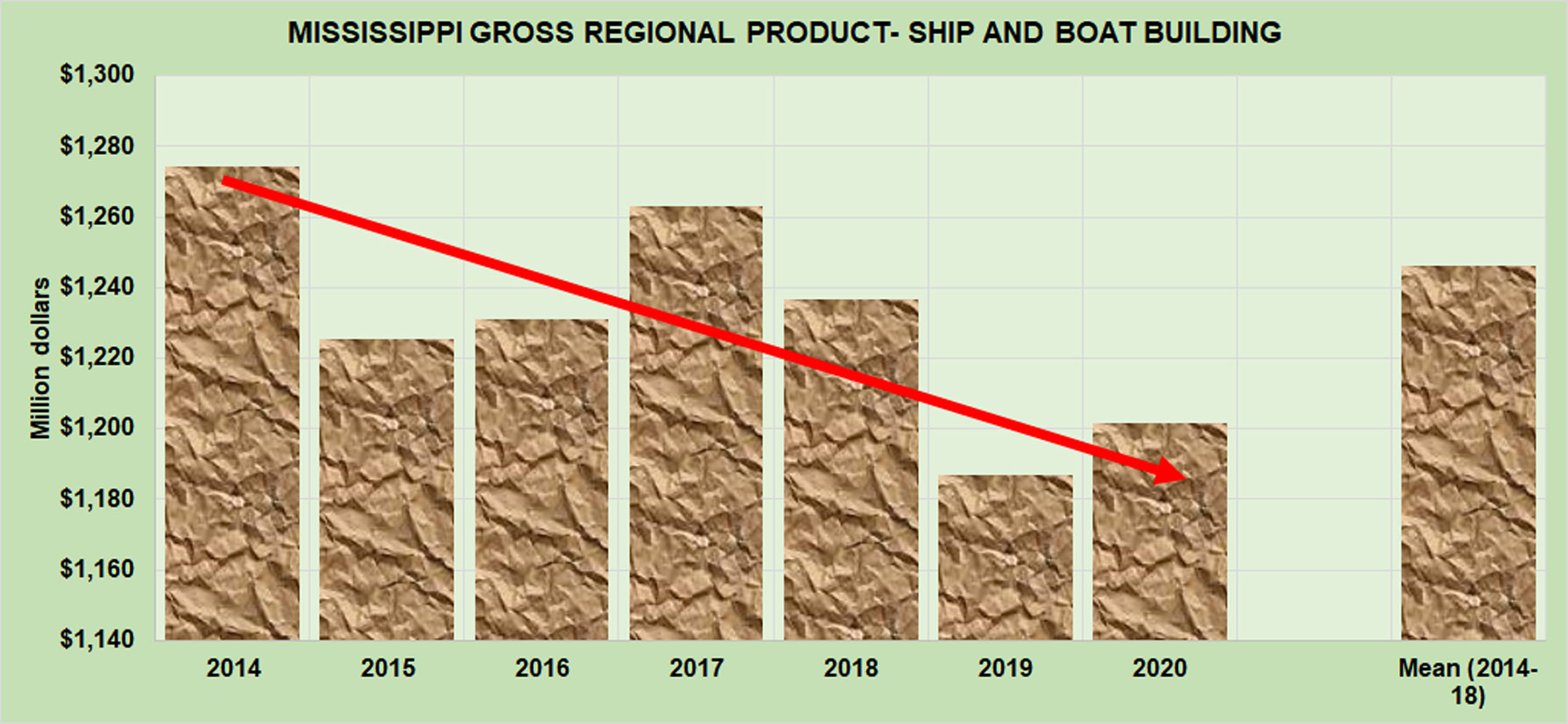 Figure 4. The GRP of ship and boat building in Mississippi fell and rose from 2014 to 2020. Source of raw data: EMSI. https://e.economicmodeling.com.
Figure 4. The GRP of ship and boat building in Mississippi fell and rose from 2014 to 2020. Source of raw data: EMSI. https://e.economicmodeling.com. Figure 5. The GRP of ship and boat building in Louisiana started to decline from 2015 until 2020. Source of raw data: EMSI. https://e.economicmodeling.com.
Figure 5. The GRP of ship and boat building in Louisiana started to decline from 2015 until 2020. Source of raw data: EMSI. https://e.economicmodeling.com.
Ship and Boat Building Employment and Wages, Salaries, and Earnings
- Ship and boat building directly provided over 143,000 jobs per year in the U.S. during the eight years.
- About -3.1 percent of SBB jobs in the U.S. were lost during the global pandemic in 2019-21.
- The five GoM states (AL, FL, LA, MS, and TX) added over 42,000 SSB jobs or 30% of all SSB jobs during the same period.
- Approximately -1.1% of the SSB jobs in the GoM were lost in 2019-21 during the global pandemic.
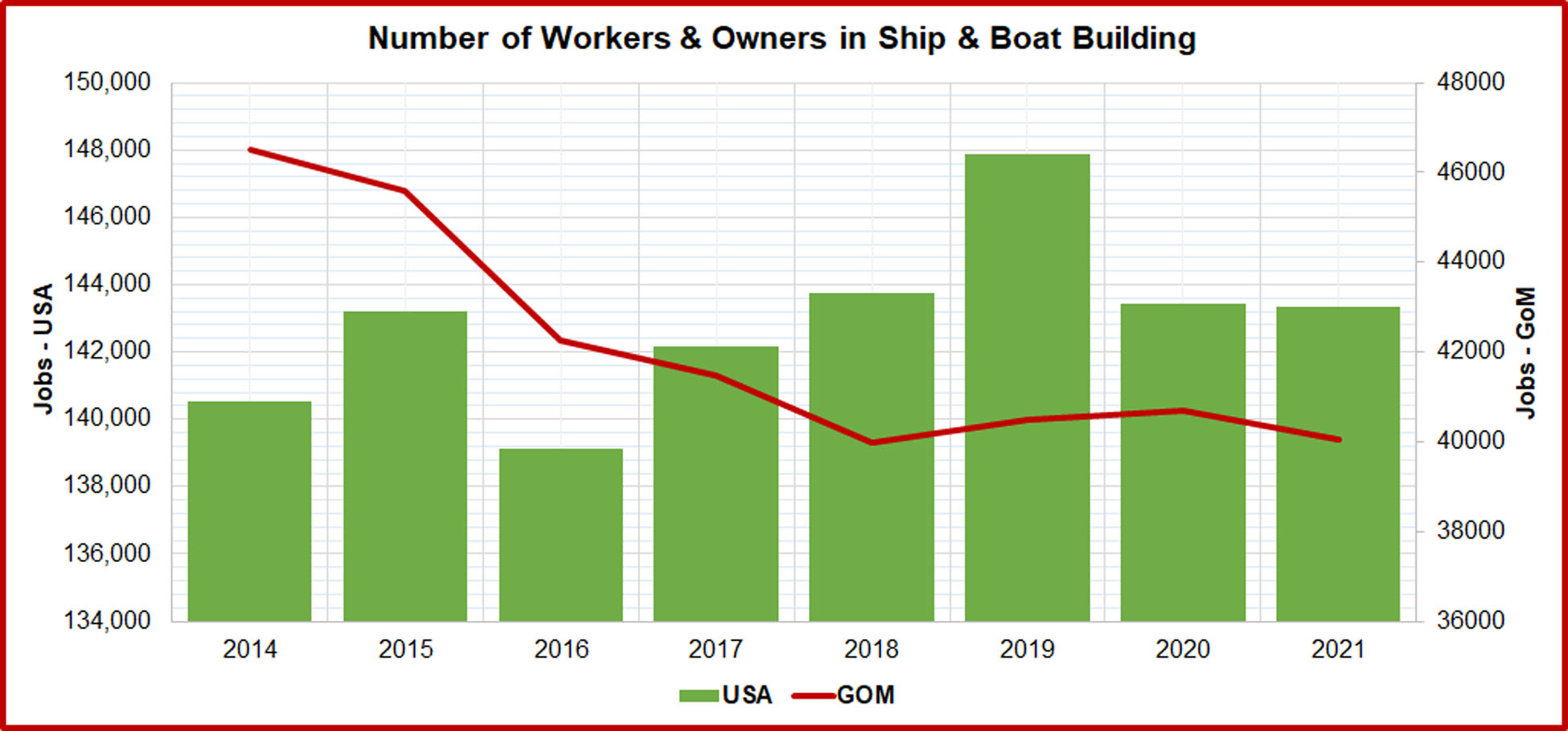 Figure 6. U.S. and Gulf of Mexico states ship and boat building employees, self-employed, and extended proprietors. Source of raw data: EMSI. https://e.economicmodeling.com.
Figure 6. U.S. and Gulf of Mexico states ship and boat building employees, self-employed, and extended proprietors. Source of raw data: EMSI. https://e.economicmodeling.com.
- Ship and boat building provided 5,260 jobs per year in Alabama (Fig. 7). Alabama lost -1.1% of SSB jobs in 2019-21.
- Ship and boat building created over 12,500 jobs per year in the Mississippi (Fig. 7). Mississippi lost-0.3% of SSB jobs in 2019-21.
- Ship and boat building generated over 6,400 jobs per year in Louisiana (Fig. 7). Louisiana lost -5.6% of SSB jobs in 2019-21.
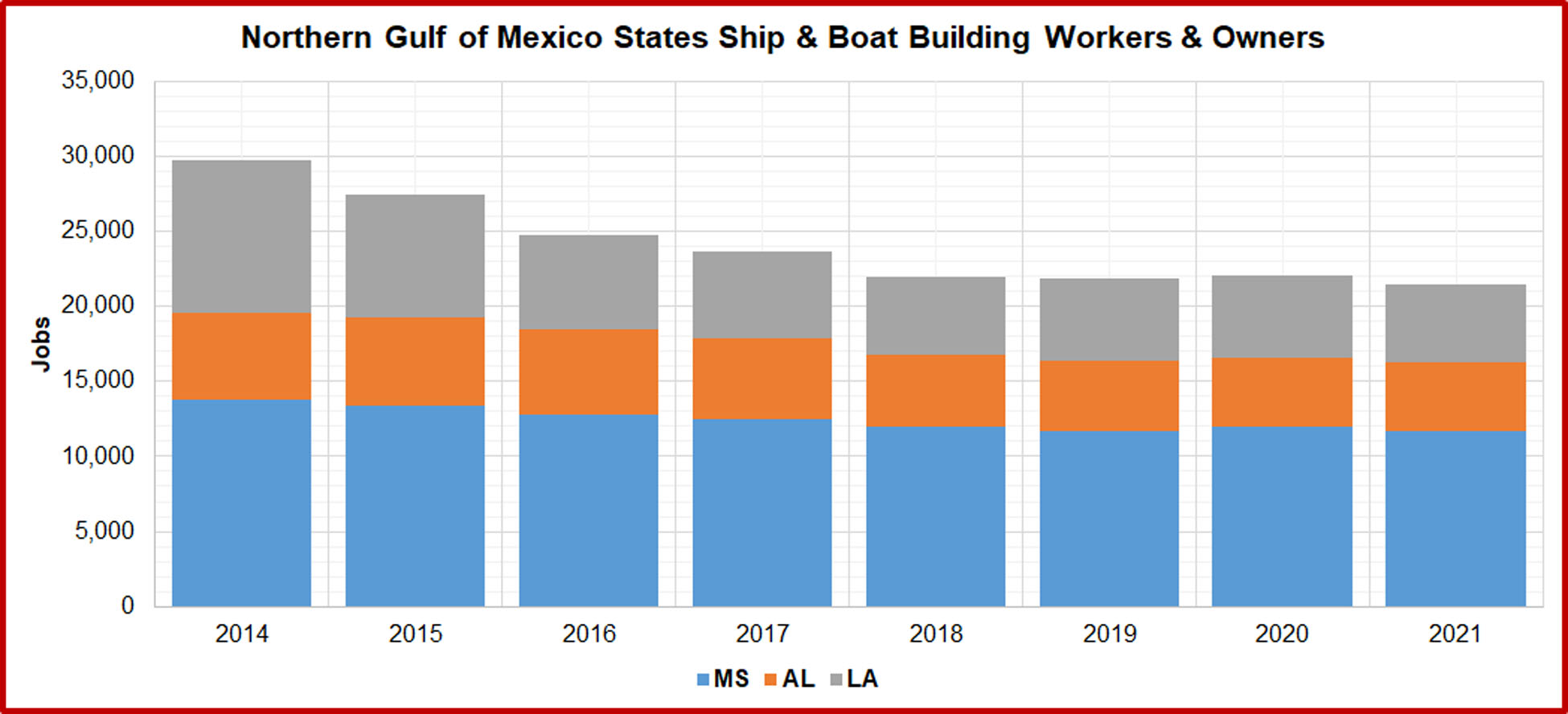 Figure 7. Northern Gulf of Mexico states ship and boat building employees, self-employed, and extended proprietors. Source of raw data: EMSI. https://e.economicmodeling.com.
Figure 7. Northern Gulf of Mexico states ship and boat building employees, self-employed, and extended proprietors. Source of raw data: EMSI. https://e.economicmodeling.com.
- The annual wages, salaries, and proprietor earnings (WSPE) of workers and owners of ship and boat building in the entire U.S. averaged $62,800 per job during the past seven years (Fig. 8).
- The annual WSPE of workers and owners of ship and boat building in the five Gulf of Mexico States averaged $59,700 per person or 95% of the national average (Fig. 8).
- The annual WSPE of workers and owners of ship and boat building in Mississippi averaged $64,000 per person or 2.3% more than the national average.
- The annual WSPE of workers and owners of ship and boat building in Louisiana averaged $60,600 per person or 98% of the national average.
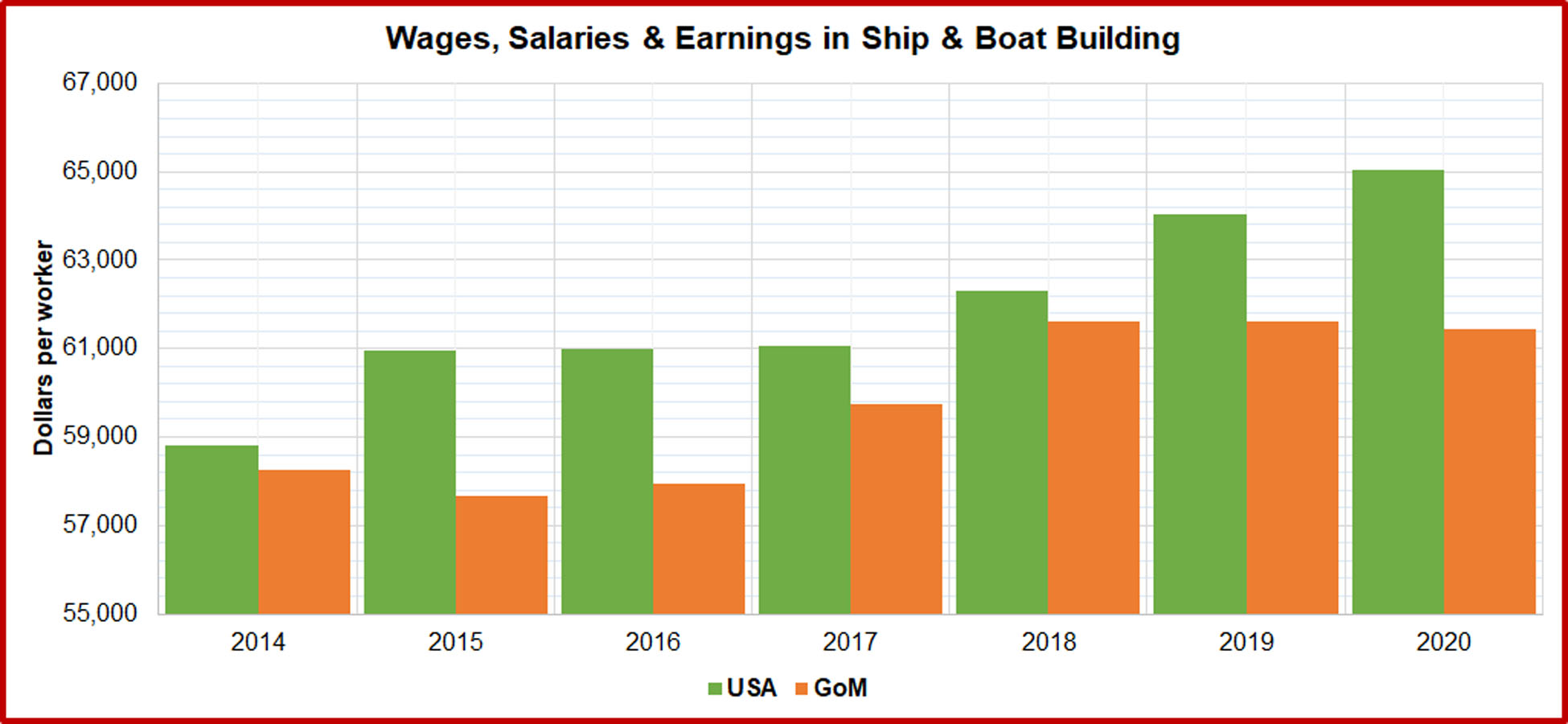 Figure 8. U.S. and GoM ship and boat building wages, salaries, and earnings. Source of raw data: EMSI. https://e.economicmodeling.com.
Figure 8. U.S. and GoM ship and boat building wages, salaries, and earnings. Source of raw data: EMSI. https://e.economicmodeling.com.
Ship and Boat Building Industry Breakdown of Employees and Owners by Gender
- The 2020 industrial overview released by EMSI (April 2021) showed that approximately 83% of workers and owners in the U.S. are males.
- In the Gulf States, 84.2% of workers and owners are males (Table 1).
 Table 1. Distribution of U.S. and Gulf of Mexico States ship and boat building employees, self-employed, and extended proprietors by gender. Source of raw data: EMSI. https://e.economicmodeling.com.
Table 1. Distribution of U.S. and Gulf of Mexico States ship and boat building employees, self-employed, and extended proprietors by gender. Source of raw data: EMSI. https://e.economicmodeling.com.
Ship and Boat Building Industry Breakdown of Employees and Owners by Race or Ethnicity
- The 2020 industrial overview disseminated by EMSI (April 2021) also categorized the workers and owners by race or ethnicity (Table 2).
- Most of the workers in the U.S. are White (65.1%), followed by African American (16.4%), Hispanic (13.6%), & Asian (2.9%).
- The rest are with two or more races (1.3%), Native Hawaiian (0.2%), & American Indian (0.5%).
- In the Gulf States, relatively more Hispanic (20.5%), African American (18.1%), and Asian (3.3%) workers and owners are involved in the industry.
- Fewer White (56.8%) workers and owners are engaged in ship and boat building in the Gulf States.
 Table 2. Distribution of ship and boat building employees, self-employed, and extended proprietors by race or ethnicity. Source of raw data: EMSI. https://e.economicmodeling.com.
Table 2. Distribution of ship and boat building employees, self-employed, and extended proprietors by race or ethnicity. Source of raw data: EMSI. https://e.economicmodeling.com.
Ship and Boat Building Industry Breakdown of Employees and Owners by Age
- The 2020 industrial overview published by EMSI (April 2021) also classified the workers and owners by age (Table 3).
- 5.9% of the U.S ship and boat building workers and owners are 65 + years old.
- 21.7% of the workers and owners were 55-64 years old.
- The 45-54 years old group added 20.7%.
- The 35-44 years old consisted of 21.5%.
- The 25-34 years old added 22.6%.
- 19-24 years old workers and owners consisted of 7.3%.
- In the Gulf States, workers and owners of ship and boat building are relatively older than the national average.
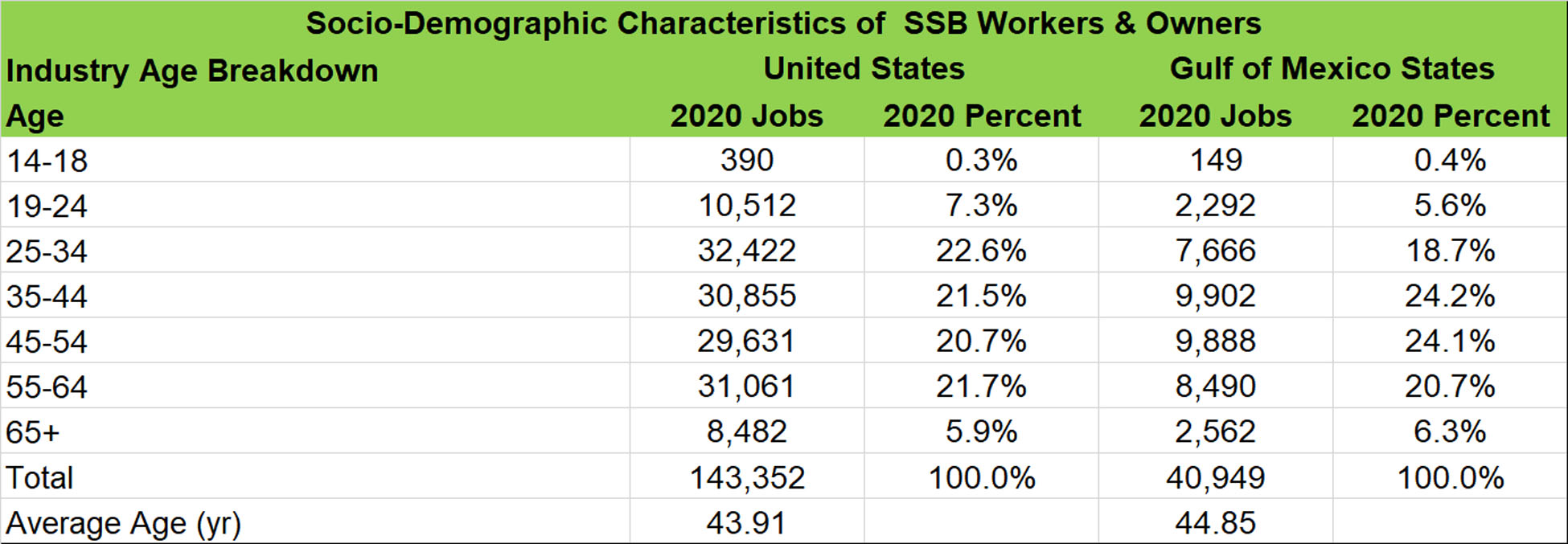 Table 3. Distribution of ship and boat building employees, self-employed, and extended proprietors by age group. Source of raw data: EMSI. https://e.economicmodeling.com.
Table 3. Distribution of ship and boat building employees, self-employed, and extended proprietors by age group. Source of raw data: EMSI. https://e.economicmodeling.com.
Summary
- Ship and boat building directly provided over 142,000 jobs per year in the U.S. during the eight years, but -3.1 percent of SBB jobs in the U.S. were lost during the global pandemic in 2019-21.
- The Covid-19 global pandemic in 2020-21 also caused significant reductions in ship and boat building jobs of workers and owners in 2020 in the Gulf region and individual states.
- The annual gross regional product of ship and boat building in the U.S. showed a rising trend since 2015, reaching $14.2 B in 2020, but was significantly reduced during the global pandemic in 2020.
My Economics Outreach on Ship and Boat Building
- Posadas, B.C. 2021. Ship and boat building in the United States and the Gulf of Mexico Region. Mississippi MarketMaker Newsletter, Vol. 11, No.12.
- Posadas, Benedict C. 2021. Ship and Boat Building in the United States and the Gulf of Mexico States. Virtual Presentation. Mississippi Horticulture, Marine, and Disaster Economics Outreach State University, Coastal Research and Extension Center, Biloxi, Mississippi.
- Posadas, B.C. 2015. Suggested Approach to Estimate Economic Impacts of Mississippi-Alabama Sea Grant Research, Education, and Outreach Programs. MSU Extension publication 2883.
- Posadas, B.C. 2015. Economic Sectors Targeted by the Mississippi- Alabama Sea Grant Research, Extension, Education, and Outreach Programs. MSU Extension publication 2846.
